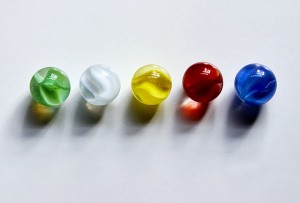
http://bit.ly/1uAoRth
White noise is something most commonly known, especially since it’s a term for chatter or a movie playing in the background that nobody really focuses on. What is far less known is that there are actually other colors of noises as well. Brown noise may be known to some as well, but what when it comes to pink, blue, or grey noise? And why do sounds and noises have colors anyway?
Let’s find out together!
What color does noise have?
When speaking of color, we ultimately think of the visual aspects linked to the term. The sky is blue, grass is green, and snow is white. Yet, when someone in physics, electronics, or audio engineering talks about the color of noise, they mean something entirely different. A certain color assigned to a sound or noise refers to the characteristics of it’s power spectrum and can roughly be compared to the term “timbre” when it comes to music.
Every different color assigned to noise has special and different properties like a different audio signal (they sound different) or different textures when visualized. Mostly, the colors assigned relate to the spectral profiles related to the color of light that has a similar spectrum as the sound. Some colors of noises are very well defined, while others are used in a more informal way.
White Noise
White Noise is the most well known color term for noises. Technically speaking, it refers to noise with a flat frequency spectrum. White Noise is known for being a constant sequence of sounds, thus it’s power doesn’t differ from ranging between 40 and 60 Hz, or 400 and 420 Hz.
White noise is used in a wide variety of ways. For example, it functions in the production of electronic music, either as an independent component or as a filter to create other types of voice signals. Especially for recreating the sounds of cymbals or snare drums with a high and content frequency, White Noise is used. It is also used to test the acoustics of an arena or hall before a concert or speech, since the cues it gives to the engineer help to equalize and balance the acoustics. It’s ability to “pierce” through other sounds is the reason why White Noise is also used in the sounds of sirens.
Furthermore, White Noise is used for the medical treatment of Tinnitus. This spectrum of noise is used in so-called White Noise Machines that mask tinnitus and help the person suffering from it to sleep, relax, or focus. In general, White Noise is often used for sleep masking to drown out other distracting and annoying sounds. Studies have also shown that using White Noise as background stimulation helps children suffering from ADHD to concentrate and increase their performance. The usage of White Noise with non-ADHD children and in offices is wildly discussed though, since it can decrease the cognitive performance.
Pink Noise
Pink Noise is also known as flicker noise. It is often used as a reference signal in audio engineering. It’s frequency spectrum is described as it’s spectral density (power per Hz) is proportional to the frequency of the signal. Thus, each octave of Pink Noise carries an equal amount of power.
Pink Noise and some of it similar forms occur very frequently in nature and thus used for many purposes. For example, Pink Noise occurs in meteorological data or radiation output. When it occurs in electronic devices however, it is often referred to by using the term flicker noise. Heart beats, neural activity, or the statistics of DNA sequences are kinds of Pink Noise as well.
In medicine, Pink Noise is applied to model the mental states of patients in psychology, and the music industry uses Pink Noise to differentiate stylistic variations in music produced in different historic periods or by different cultures. Similar to white noise, Pink Noise is used for testing and adjusting acoustics. It is also used by electronic engineers to test microphones or loudspeakers.
Brown(ian) Noise
Loosely speaking, Brown or Red Noise refers to a spectral system in which power density decreases with increasing frequency. When speaking of Brown(ian) Noise, the sounds in question are often seen as a simulation or corruption of Brownian motion rather than being correlated to the color brown. Brown Noise often sounds like a low roar since it’s located at the lower end of the spectrum.
Similar to White Noise, Brown Noise is used to mask sounds when trying to relax or sleep. It’s lower tone is described as being more pleasant to listen to in comparison to White or Pink Noise. It is used to mask Tinnitus as well, or to increase sensitivity to environmental sounds. Furthermore, it can help easing hyperacusis due to it’s lower tones.
Grey Noise
Grey Noise a kind of White Noise that has been altered to be equally loud over all frequencies. To achieve this, noise has been subjected to a psychoacoustic equal loudness curve. Thus, it differs from White Noise which is perceived as being equally loud at all frequencies while it actually isn’t. Grey Voice is weighted towards the higher and the lower end of the frequency spectrum at the same time.
Grey Noise proved to be useful in studies abut hearing difficulties. Exposing patients to Grey Noise allows researchers to determine how said person’s hearing differs to the hearing of the average.
Blue and Violet Noise
Blue and Violet Noise appear on the opposing end of the spectrum from Brown(ian) or Red Noise. Similar to Pink Noise, Blue Noise changes proportionally when the frequency increases. Violet Noise increases it’s power density as well when frequency increases.
Violet Noise is also used in the treatment of Tinnitus since it’s high sounds mask the high frequency sounds Tinnitus patients suffer from.
There are other colors for noise, such as black, green, or orange, but those aren’t as clearly defined as the ones mentioned above. Sometimes, they are even used synonymous with the scientifically defined colors of noise.

